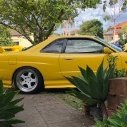Kliks On The Clock
Announcements
-
Similar Content
-
Latest Posts
-
If the gases flowing in those two tracts had the same properties, you could maybe use such broscience. But the exhaust has a different composition, different normal density, different actual density (because of different normal density, and mostly because of the massively higher temperature), and different viscosity (again because of much higher temperature). Consequently, all of the fluid dynamics parameters that matter, that you calculate from these inputs, such as the Reynolds number, friction factors (for wall friction) and so on, are all incomparable.
-
And we shall have to presume that Canada is the same?
-
By joshuaho96 · Posted
In the US almost everything is E10. It can't exceed 10% by much or fuel systems have trouble adapting. At the same time because MTBE, MMT, and TEL are all banned they need as much ethanol in it as possible to boost octane. -
I was mostly jesting. In my experience (and probably only my experience) the R34 GTT physical airbox space is actually too small to flow the amount of power it wanted. By sealing the box, I made it so it could only be fed by the ducts themselves. So you can seal it up and get nice cold air which IS good, but at a certain crossover point: More Hot Air > Less Cold Air I don't think you're at this point. In my case merely ducting the hot air intake with a very focused set of ducts counteracts the fact it's in a V8 engine bay. More cold air obviously best. The solution looks great.
-
Nah, the OEM CAI pipe is still installed behind the bumper, it is about 5" x 3" oval at the engine side, tapering down to a 3" pipe behind the bumper where it gets all the ambient air it needs Engine side of radiator support OEM intake pipe "oval hole" that is right in front of the filter My OEM NC1 CAI pipe: From NC2 onwards, below pic, they come slightly smaller at 2.75" diameter with corrugations and a resonance chamber to reduce intake noise, lucky for me my NC1 has the bigger noisy one, LOL Basically, the "sealed" airbox will just get ambient air from a 3" pre filter intake tube that is the same size, 3" as the rest of the intake pipe post filter, and if a 3" intake isn't big enough to flow enough air for 150 killerwasps then there are other issues The whole intake is basically the same length as OEM, but it is now about 30% bigger from the airbox back through to the new intake plenum than OEM, and the intake plenum is port matched to the head And the intake is now about 30% bigger than my 2.5" exhaust, so the suck, squeeze, bang and blow black magic should be fine, well, to my uneducated understanding of fluid dynamics anyway Talking the the guys at MX5 Mania, it may even make a few more killerwasps as the intake isn't sucking hot air, especially off idle or when in slow traffic when it would be sucking hot air As for the difference in IAT, I haven't logged IAT yet, as I don't currently have a OBD2 reader, but I will have a play with my thermal lazer thingie next time I take the car out to sèe how hot stuff gets under the bonnet near the intake filter prior to installing the air box, my "assumption is it has to be much better after the air box is in and sealed up compared to what it is now The aftermarket "performance" CAI elephant in the room: Aftermarket CAI intakes typically have the air filter tucked up behind the bumper, with a 2.5" intake tube (the OEM intake pipe is actually about 30% bigger than the fancy pants "aftermarket" version.....WTF), and you need to remove the bumper to service the filter, which is a PITA Like dis:
-





Recommended Posts
Create an account or sign in to comment
You need to be a member in order to leave a comment
Create an account
Sign up for a new account in our community. It's easy!
Register a new accountSign in
Already have an account? Sign in here.
Sign In Now